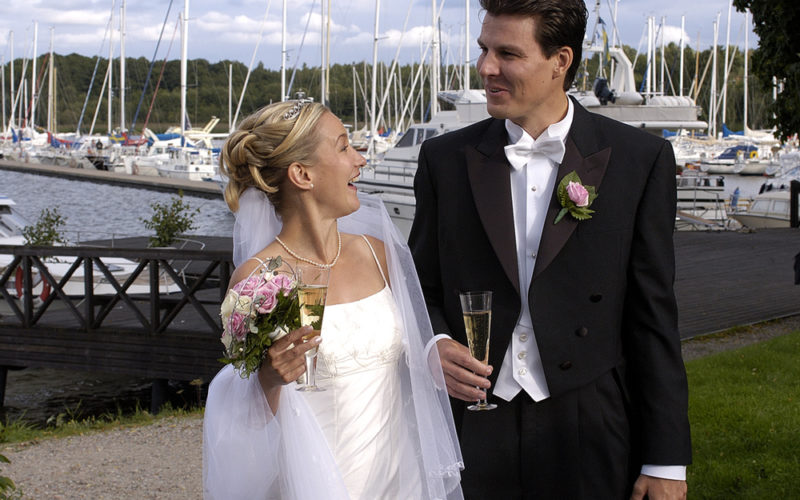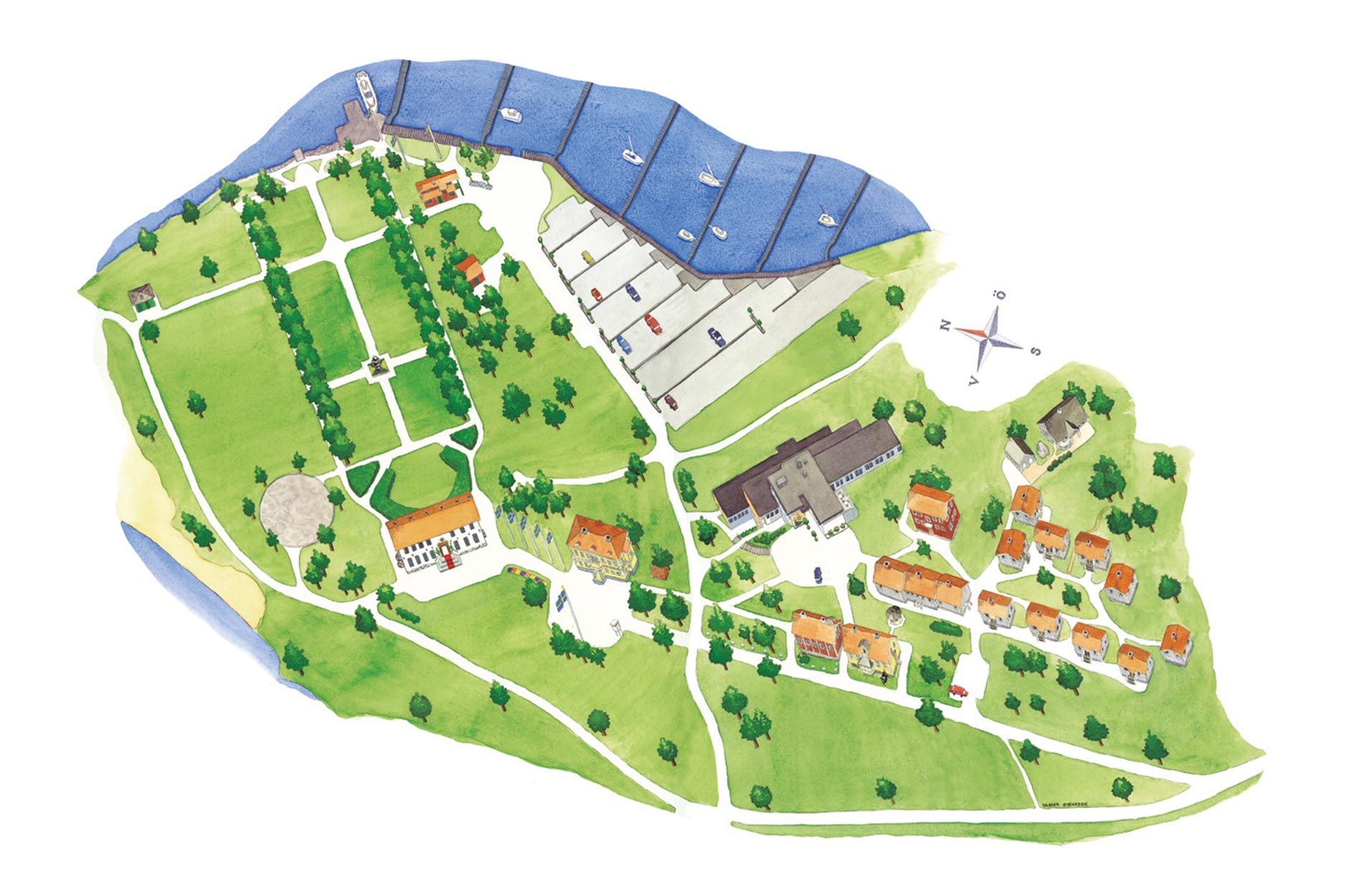
Wedding packages
Let us take care of one of the most important days...
Proceed to Wedding packagesKeep track of your wedding planning with Sundbyholm Castle’s checklist. This checklist is written in general terms, and you absolutely do not need to have your wedding here to find it useful. Good planning is key to a successful wedding day, whether you choose to get married in a church or civil ceremony, in a castle or a cottage. The most important thing is that this day is filled with joy and becomes a memorable day for the rest of your lives.
18 months remaining
12 months remaining
9 months remaining
6 months remaining
3 months remaining
2 months remaining
1 months remaining
1 week remaining
The day before the wedding
The day off
|
At Sundbyholms Castle, it almost never happens that the bride and groom leave the wedding reception to go on their honeymoon. However, it is common for the newlyweds to leave the party a little earlier than the last guests to go to the wedding suite. The next morning, sharing breakfast with the wedding guests is such a special experience that you don’t want to miss it. When you get home, there are still more things on the checklist. You need to send thank-you cards to all your guests, and also handle the practicalities of submitting the marriage certificate to the Tax Agency, and possibly getting new driver’s licenses, passports, and bank cards if you have changed your surname. Hopefully, you can eventually relax and set off on your honeymoon. A bit more useful information about weddings and wedding planning Since May 1, 2009, marriage has been gender-neutral. Previously, same-sex couples could only register a partnership. Civil wedding ceremonies in Sweden are not valid without two witnesses over the age of 18. According to Swedish law, the person officiating the wedding must have the legal right to perform marriages. If you belong to a religious community that does not have marriage officiant rights, you must also have a civil ceremony for the marriage to be legally recognized. Preliminary Examination (Hindersprövning) The preliminary examination is carried out to confirm that there are no legal obstacles for a couple to marry. (For example, that neither is already married, or that there is no close kinship between the parties.) Previously, banns in churches served the same purpose, but nowadays you turn to the Population Register Department of the Tax Agency. On a form, you declare that there are no legal impediments to marriage. The Tax Agency checks their records and issues a certificate. This certificate is then handed over by the couple to the officiant. After the wedding, the officiant fills out the certificate and sends it to the Swedish Tax Agency. The marriage is then registered in the population register. The law states that both parties must be over 18 years old unless they have obtained special permission from the County Administrative Board. On the Swedish Tax Agency’s website, you can read about the preliminary examination, what applies if you are a foreign citizen or want to marry abroad, marriage registry details, and more. Did you know that you can register a previous partnership as a marriage? Costs Most often, guests pay out of pocket for what they consume at the bar after dinner, and they usually pay for their own hotel rooms as well. Dress Code The bride’s attire can vary—from a short wedding dress or perhaps a suit for her, and a tuxedo or jacket for the groom. This attire is recommended for a morning wedding. However, other, perhaps simpler, clothing choices are also acceptable as long as guests are aware and have the same options. A long dress and tuxedo are still the most common choices for church weddings. The bride may wear a veil attached to a crown or a floral arrangement in her hair. If she chooses to wear gloves, the left ring finger glove should be slit open so the ring can be slipped on. The groom typically wears a tuxedo shirt, a white vest, and a white bow tie. Military uniforms are also formal wear, and nowadays, the groom can also wear a tuxedo, which was previously considered unthinkable. The groom often matches his boutonnière with the bride’s bouquet. Guest attire is specified on the invitation. If nothing is stated, it is generally interpreted as formal wear, i.e., tuxedo. Since the dress code is often written out, it’s advisable to clarify if “tuxedo” is intended when nothing is specified. “Kavaj” (jacket) generally means a suit. It can be dark with black socks and shoes, but in summer, lighter colors are also acceptable. Today, a stylish combination of a blazer with mismatched trousers, shirts, and a tie is also common. For women, if the invitation states “kavaj,” the attire can be a dress, a suit with a skirt or trousers, all in a suitable festive style and material. Sometimes, the invitation says “Kavaj or kostym,” in which case women can dress more elegantly if they wish, even a long evening gown is appropriate. “Smoking” is traditionally not a wedding outfit, but nowadays, if “smoking” is specified on the invitation, then that is the dress code. Smoking comes in various colors, but in this context, black or blue with black shoes and matching socks is expected. A woman’s “smoking” is an evening gown, long or short, according to etiquette—long if it’s a dance, short if it’s dinner without dancing. If “frack” (tailcoat) is on the invitation, that is what men should wear: a white tailcoat shirt, white vest, and white bow tie (not black, as that is professional attire in the restaurant industry). Black shoes and socks complete the outfit. Women should wear a long evening gown. If they wear strapless or sleeveless dresses, long gloves are recommended. Festive attire can also include some sparkle and adornment. If “high dress” or “tailcoat” is on the invitation, it is also permitted to wear folk costume, both for men and women. The same applies to uniform. A “kavaj” (blazer) is a less common choice for wedding guests, at least in Sweden, but if it’s worn, it means a jacket with rounded front edges, which can be black or gray with gray or striped trousers. A white shirt, black or gray tie, or a tuxedo shirt with a scarf are part of the outfit. A tall, gray hat completes the look. For women, elegant and sober attire such as a dress or cocktail dress is appropriate. Hats and gloves are common accessories. Female guests traditionally do not wear white at weddings (to avoid competing with the bride), nor do they wear black, the color of mourning. However, mixing colors and patterns is perfectly acceptable. Bridesmaids and groomsmen wear outfits matching the formality of the couple. The bride may have several bridesmaids, and the groom several groomsmen, but today, it’s most common to have one of each. Flower girls and boys participating in the wedding procession are dressed nicely and preferably in similar attire. Seating in the Church Traditionally, the bride’s family and friends sit on the left side of the aisle, and the groom’s on the right. The front benches are usually reserved for close relatives. However, if one party has a small family or few guests, the seating may be arranged more evenly, possibly with the help of the churchwarden. If one of the couple’s parents is divorced, they should still sit in the church as if still married, on the front benches, as parents. If there are new partners, arrangements may be made based on what feels appropriate for the situation. |
Procession
As soon as the entrance music begins to play, the priest approaches the altar, and the bridal procession also begins—the groom on the right and the bride on the left (opposite to the customary order—but after the ceremony, when the couple has turned for the exit, the positioning becomes the “correct” one).
The wedding party’s escort can consist of marshals, bridesmaids, and flower girls.
If there are more marshals and bridesmaids in the entourage, they enter the church after the couple—marshals to the right behind the groom and bridesmaids to the left behind the bride. If there is only one marshal—or, as it’s now called, the “best man”—he can wait at the front near the altar. Bridesmaids can either walk behind the couple or, if it is only one, stand ready for their task in the first pew on the left side of the central aisle. Alternatively, the marshal and bridesmaid can wait on either side of the altar for the couple.
Sometimes, the Anglican custom is observed, where the bride’s father “gives away” his daughter. In this case, the groom waits at the altar, while the bridesmaids and marshals follow the bride and her father to the altar, where the bride is handed over to the future husband. The father then takes his place in the front left pew.
The Wedding Ceremony
After the entrance music and hymn singing, the priest’s opening words follow, along with an explanation of the divine purpose of marriage.
Next, the priest or a friend of the couple reads a Bible passage. The congregation then rises to witness the vows exchanged by the bride and groom.
If the best man is responsible for the rings, he now hands them to the groom, who then passes them to the priest. The priest turns toward the altar and offers a prayer.
The bride then hands her bouquet to a bridesmaid or flower girl—or someone who steps forward from the front pews. The couple holds the rings together while they sequentially make their vows, repeating the priest’s words.
The congregation sits down while the couple remains facing the altar. This is an opportunity for music or solo singing, followed by a prayer led by the priest or a friend. During the prayer, the couple kneels at the altar and remains kneeling during the prayer and blessing. When they rise, the bride receives her bouquet back from the escort.
A wedding speech and a hymn usually conclude the ceremony, during which the priest often hands over the marriage certificate.
Solo Singing
If there is solo singing or music, one of the moments is just before the recessional (these moments are before the first hymn, after the priest has announced the marriage, and after the final hymn). If the solo is performed at the end, the newlyweds can turn to face each other and then turn fully toward the congregation.
Recessional
When the exit march is played, the bridal party marches out with the couple in front. The bride now walks on the right side of the groom. Outside on the church steps, the couple waits to receive their guests’ congratulations and well-wishes before continuing to celebrate the occasion.
Civil Wedding
The most common location for a civil wedding is the Town Hall or City Hall. At a civil ceremony, you are married by an officiant. The County Administrative Board can provide more information about the process. You can also get married civilly at Sundbyholms Castle if you are planning to hold your wedding banquet there.
Wedding Reception
It’s always good to appoint a host or “toastmaster”—which is what we often call it today. The word literally means “master of the toasts,” and that’s precisely what they should ensure—that all toast opportunities are announced, including everything from telegrams to registered speakers. Anyone wishing to give a speech during the meal should sign up with the toastmaster, who makes a list of speakers and their relationship to the couple. It’s important to ensure speeches are made at appropriate times—not during a sensitive main course or during a melting ice cream dessert.
If there are many guests, a seating plan displayed near the dining area helps.
The bride and groom sit opposite each other, she to the right of the groom. The bride’s father sits closest to her, and next to him, the groom’s mother. If the officiant is present at the meal and is seated, he or she sits next to the groom’s mother.
On the opposite side, next to the groom, sits the bride’s mother, who has the groom’s father at her side. If the officiant is a woman, her seat is next.
Engaged and newly in love couples are generally not separated at the table, unlike married couples and cohabiting partners. Bridesmaids and marshals usually sit together.
Speeches
The first expected speaker is the bride’s father. He welcomes everyone and raises a toast of welcome. If the couple themselves are hosting, the bride’s father can also welcome. He then speaks to the couple—first to his daughter but also welcoming her new son-in-law—with wishes of good fortune and a toast to their future together.
Next, the bridegroom’s father is expected to speak, wishing the couple well.
Who gives the thank-you speech after the meal depends on the circumstances. If the couple hosts, the bride’s father, who has hosted the bride at the table, will thank. If the bride’s parents are hosts, the groom’s father typically delivers the thank-you.
The order of speeches then proceeds with family and close friends before more distant relatives. It’s also customary for the marshal to give “The Speech to the Woman” and for someone else to deliver “The Speech to the Man.”
A variation is to jointly or in unison recite a specially written song or poem for the evening—an alternative if you feel unsure but still want to express heartfelt words.
Good luck on your big day!
 Close the map X
Close the map X
Move the cursor over the numbers on the map to see information about the different buildings.
Please note that there is no accommodation in the Castle, but instead a restaurant, banquet halls and a breakfast room.

Slottet från 1648 är idag restaurang, festvåning och frukostmatsal.
2.
The Manor House from the 18th century has six suites, lounges and a board room
3.
Hotellet har reception, 11 standard dubbelrum, 48 mindre dubbelrum, konferenslokalerna Amiralen, Kaptenen och Löjtnanten samt grupparbetsrum.
4.
The harbour café offers ice cream, snacks and light meals.
5.
The Coachman's Quarters from the 17th century offer two suites and one small double room.
6.
The Keeper's House has two conference rooms and several break-out rooms.
7.
Paviljongen innehåller åtta standard dubbelrum och konferenslokalen Lövsalen.
8.
The red two-storey building is called the Wagonsmith and has 12 standard double rooms.
9.
Dessa tio chaleter byggdes strax efter andra världskriget och här finns åtta juniorsviter (familjerum), 16 standard dubbelrum samt fyra spasviter med bastu och bubbelbadkar.
10.
Här finns tre varma utomhus hot spa bad, som kan hyras i receptionen.